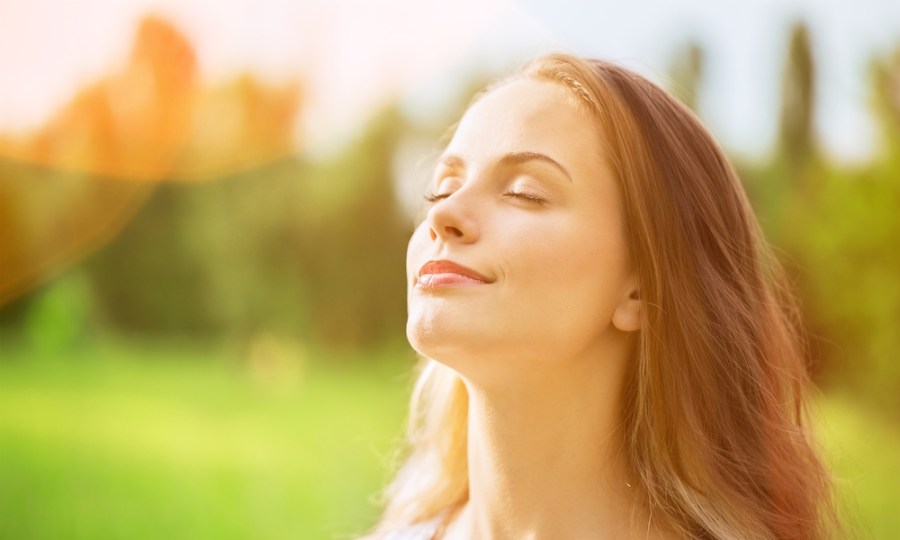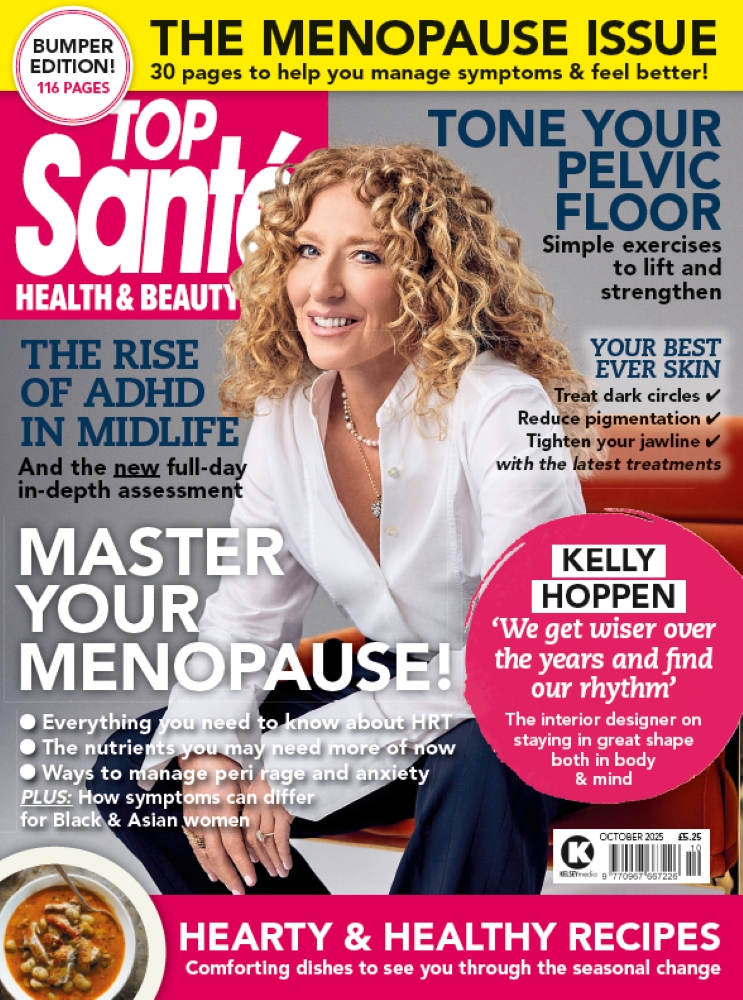Discover breathfulness or breathwork with these easy exercises, and you’ll feel calmer and happier in no time
Fresh sea air whipping through your hair as you stroll along the seafront, the heady perfume of the season’s blooms mingling with the tang of just-cut grass – the summer breeze brings with it so many simple pleasures. So, make the most of these long, sunlit days by pausing to take a deep breath and really savour that particular feeling in the air.
You take 20,000 breaths a day, and each one has the potential to enhance your physical and emotional wellbeing in a whole host of ways. In fact, breathing is fast becoming a fitness trend in its own right. Part mindful meditation, part gentle lung workout, ‘breathfulness’ can boost your physical performance, emotional wellbeing and overall health.
‘We are all born with the natural ability to breathe properly,’ says London breath coach Rebecca Dennis, author of And Breathe: The complete guide to conscious breathing – the key to health, wellbeing and happiness (£14.99, Orion). ‘And we can change the way we think, feel and react just by changing the rhythms of our breath.’
How abdominal breathing calms you down
Slow, deep abdominal breathing is relaxing because it activates your parasympathetic nervous system, which flicks the stressed ‘fight-or-flight’ mode off and switches the relaxed ‘rest-and-digest’ mode on. ‘You will feel calmer in seconds, because this kind of breathing lowers your blood pressure and heart rate immediately,’ says clinical psychologist Dr Belisa Vranich, author of Breathe: 14 Days to Oxygenating, Recharging and Fuelling Your Body and Brain (£12.99, Hay House). It also stimulates alpha brainwaves, which are the kind your brain produces when you feel calm and relaxed, but also fresh and alert.
Breathing like this floods your system with oxygen, gives the organs around your diaphragm a good massage and triggers a cascade of chemical reactions to fill you with energy and calm, positive feelings. You can do it anywhere, but if you really want to maximise the benefits, get out and breathe that fresh summer air.
‘You can absorb energy from the environment via breath techniques,’ says Rebecca Shepherd, a Daoist yoga teacher from Cockermouth, who teaches breathwork known as Pranayama on Armathwaite Hall’s forest bathing breaks.
‘I encourage my students to feel the movement of the Chi, or energy, within them. Chi flows through the water-rich areas of our bodies just as it does in plants and trees,’ she says.
 Breathwork can help your creativity
Breathwork can help your creativity
‘It’s no coincidence we use the same word – inspiration – for the in-breath as we do for those “light bulb” moments,’ says Rebecca Shepherd. So it should come as no surprise that deep meditative breathing can help us come up with new ideas, according to research published in Frontiers in Psychology. ‘Expanding on the inhale allows you to relax and really tap into your intuition,’ Dr Belisa agrees. ‘So yes, it can help you be more creative, more intuitive, more flexible – it means you can listen to your gut and problem-solve much more effectively.’
So, carve out a few minutes at the beginning or end of each day to take a little breathing space – your brain might only make up two per cent of your body weight, but it uses 20 per cent of the oxygen you breathe in.
Look younger with breathwork!
Breathfulness could even help you look as healthy on the outside as you feel on the inside.
Antioxidants are your first and best line of defence against free radicals, premature ageing and age-related illnesses – and 40 minutes of focused diaphragmatic breathing can top up your reserves, according to Italian researchers.
Filling those lungs with fresh sea air is also beneficial – it’s packed with negative ions and breathing them in sets off a series of chemical reactions that help to balance out your levels of ‘happy hormone’ serotonin – we make that another reason to be cheerful!
Easy breathwork exercises
Practise these for one or two minutes, two to four times a day. Explore how each works for you – some are calming while others are more energising.
1. Breath to transform
‘Transformational Breath is a mindful meditation technique that will connect you with your breath and open up your respiratory system to bring you physical and emotional freedom,’ says Rebecca Dennis.
- Take a deep breath in through your nose, filling your belly with air so it expands like a balloon.
- Then exhale with a soft sigh. Your in-breath should be about twice as long as your out-breath – this will encourage you to let go of control.
2. Horizontal breath
Three or four times a day, take two minutes to focus on horizontal breathing, suggests Dr Belisa. Whereas humans are designed to be ‘in-and-out’ breathers, many of us have got into the bad habit of being ‘up-and-down’ breathers. This means that only a fraction of your lungs are being used to take in air, which sends stress signals to the rest of your body.
- Place a hand on your belly and take slow, deep breaths in and out through your nose. Keep your shoulders still, but let your tummy expand as you breathe in and deflate as you breathe out – like a baby or a sleeping cat.
3. The beginner breath
The beginner breath exercise trains you to breathe from your diaphragm. ‘It’s great for your back, pelvic floor and digestion, and you can do it anywhere,’ says Dr Belisa.
- As you inhale, let your belly go and tip your hips back so your bum juts out.
- As you exhale, tuck your bum in and pull your belly button in towards your spine. You can stand up or sit down to practise this.
4. Kapalabhati breathing
Kapalabhati breathing refreshes your blood and boosts oxygen levels for the ultimate mid-afternoon pick-me-up. ‘As the day goes on, carbon dioxide builds up in your blood. Kapalabhati perks you up!’ says Rebecca Shepherd.
- Start with a short, sharp exhalation through your nose or mouth – imagine blowing out the candles on a birthday cake.
- Now, relax your belly and let the in-breath drop back in naturally as your tummy expands.
- Repeat this 10 times, then allow your breath to return to normal.
5. The 4-7-8 breath
The 4-7-8 breath promotes sleep and reduces stress by enhancing the flow of oxygen into the body, according to the University of Arizona’s Dr Andrew Weil.
- Put the tip of your tongue behind your front teeth.
- Inhale quietly through your nose for four counts, hold your breath for seven counts, then exhale through your mouth for eight counts, making a ‘whoosh’ sound.
- Repeat this cycle four times in total, twice daily.
6. Equal breathing
‘Equal breathing – making your out-breath the same length as your in-breath – is a yogic technique that calms your mind, tones your heart muscle and improves lung capacity,’ says Rebecca Shepherd.
- Breathe in through your nose for three counts, feeling your tummy expand, pause for a moment, then exhale for three counts.
- You can gradually work up to four, five or six counts.
7. Walking meditation
‘This simple walking meditation will bring peace and tranquility,’ says Rebecca Dennis. Try it on the beach, or in your local park.
- First, stand still and pause: this time and space is for you. Feel the ground beneath you, take a few deep breaths and become aware of the movement of breath in your body.
- As you start walking, notice how your feet feel, your connection with the ground and how your balance changes. Stay in the present moment.
- If your mind wanders, guide it back to the sensations of your breath and your feet on the ground.
Now: discover the health benefits of barefoot walking







